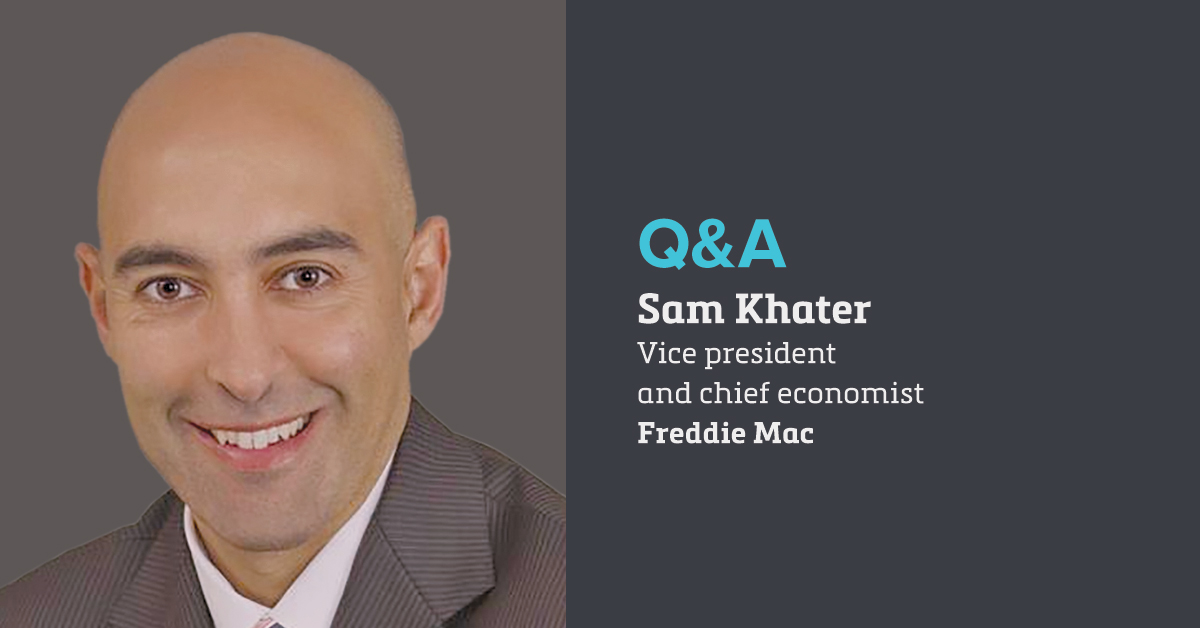Freddie Mac chief economist Sam Khater recently took a look at the cost of vacant housing lots in northern Virginia. Prices ranged from $200,000 to more than $1 million. Khater noted a lack of availability at the low end.
Khater laid out a scenario where a homebuilder buys a lot for $400,000. Add in $90,000 or more for building permits and other fees during development. The builder is out $500,000 even before sticking a shovel in the ground, Khater said. This is one of the reasons why home prices are rising into the unaffordable territory for many Americans.
“This isn’t even a middle-class issue anymore,” Khater said. “This is becoming an upper middle-class issue. It’ll take time for it to come up on the public consciousness, but it’s kind of rolling up the income distribution in terms of the inability for even upper middle-class families to now find new homes to purchase.”
Khater spoke to Scotsman Guide about what could ease the way for more construction. He also talked about what he would say to first-time homebuyers, as well as something on the horizon that could impact housing.
How will rising interest rates affect the housing market?
Rising interest rates will have the potential of slowing down economic growth. It’ll have the potential of leading to a slowdown on purchase demand. And it’s already greatly narrowed the refinance window, at least for the moment.
Do you think there will be a correction in home prices?
If by correction, you mean home-price declines? No. If by correction, you mean home-price slowdown, then the answer is yes. I think none of the preconditions for a home-price decline are there.
Have low interest rates created a gridlock where people aren’t selling their homes, thus limiting inventory?
If your question is whether that’s the main driver for the lack of stuff supply, absolutely not. It’s very simply, there’s just not enough construction. We’ve been underbuilding for close to 10 years and that cumulative amount has really added up. In fact, we estimated that the supply shortage (of houses as of fourth-quarter 2020) was about 3.8 million.
One major factor has been the lack of labor, and that’s gotten worse during the pandemic. Also on the construction side, the decline in immigration has been a second component. The construction industry is struggling to attract young workers. Homebuilders went out of business during the Great Recession. A lot of them got wiped out and they haven’t come back into the market.
I think none of the preconditions for a home-price decline are there.
What else is hampering construction?
The lack of lots in places. There aren’t as many available lots or they’re very expensive. Acquisition, development and construction financing became a lot more expensive post the financial crisis. Another major one — a huge one — is zoning. To me, the biggest thing is the zoning. I’m not talking about building condo towers everywhere. I’m just talking about, if you allow duplexes and triplexes in some areas that are restricted to one unit, then that does work. It can make a huge difference.
What would you tell people who are looking to buy that first home?
Buy as early as possible. If you wait to find that perfect home at this point, you’re going to have way too much competition. Be flexible, and that could be kind of your location or amenities or size of the home. When there’s such a limited supply and a lot of demand, it’s a seller’s market. You’re not in the driver’s seat. And that’s hard for a lot of people given that it’s your first home.
Anything else on your mind when you’re looking at the housing market?
One interesting thing is just the slowdown in population growth. What does that mean for housing? What does that mean for the economy? We’ve had a slowdown for several reasons. One was a long-term decline that’s been happening for a while. We’ve also had a slowdown because of the pandemic — not a surprise birthrates are down. We’ve also had a slowdown due to immigration policy.
The long-term drivers of housing are really demographics. So, it really is about the outlook for the housing market — single-family and multifamily — 10, 15, 20 years down the line. ●






